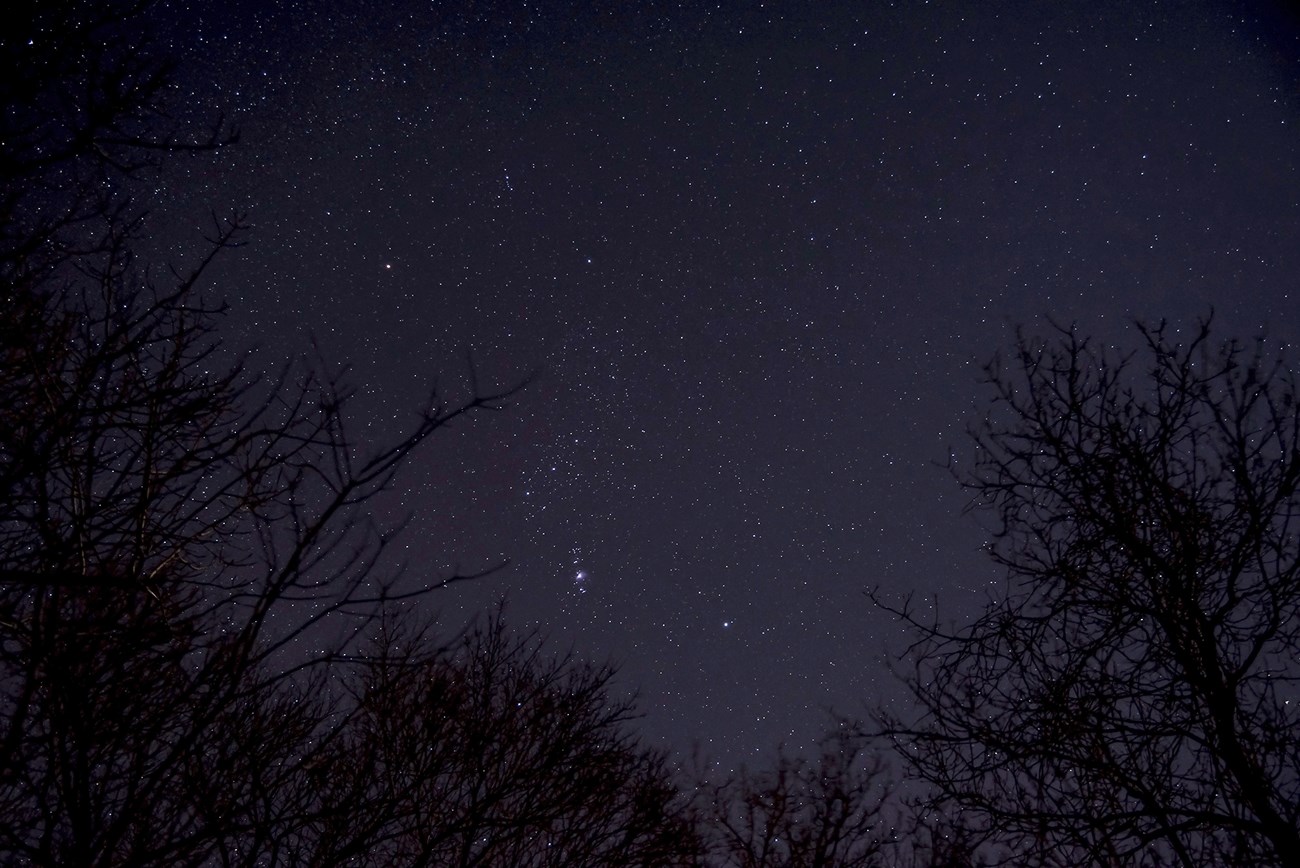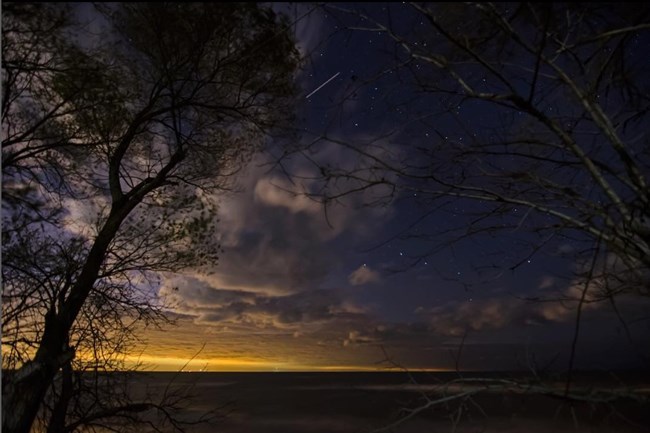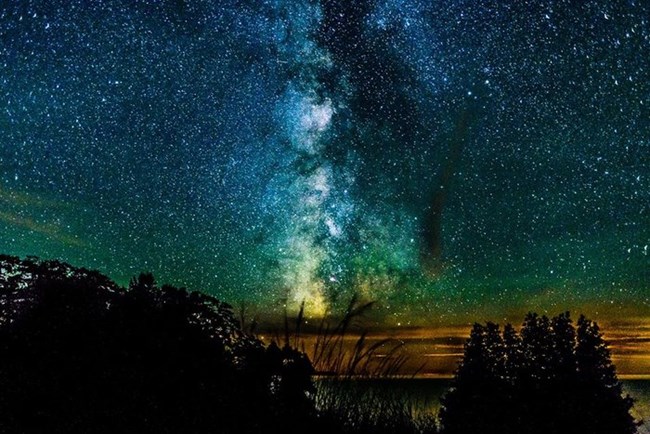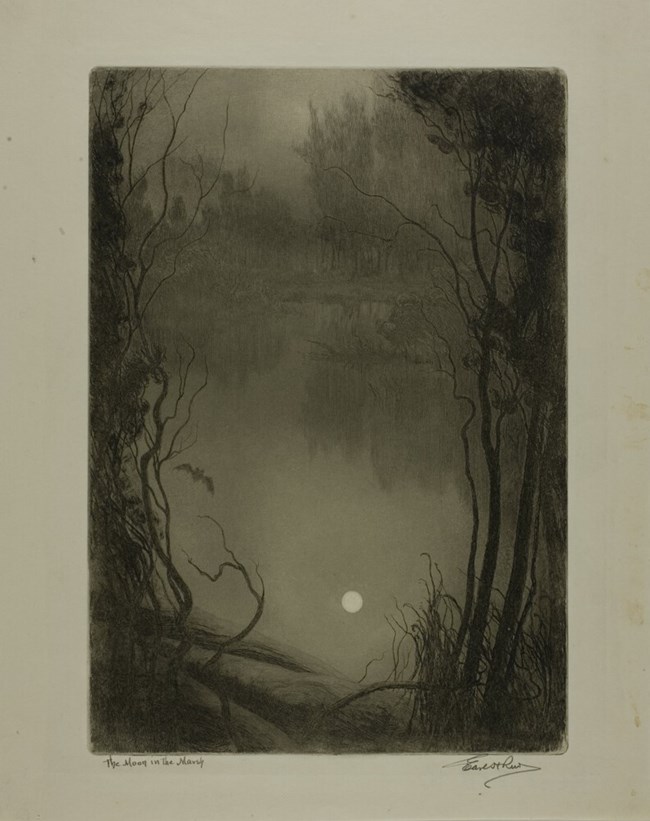
Tom Gill 
Tom Gill The night sky is a glittering dome peppered with stars, planets, and passing meteors. For millennia, our ancestors experienced a dark night sky. Cultures around the world told stories about the constellations and used the stars as a calendar. Only for the past few generations have humans been denied the chance to stand in awe of the heavens. Artificial lighting and atmospheric pollutants wash out the light of the stars, making them less visable or completely absent. Learn how you can help preserve the Night Sky
Rafi Wilkinson Where to EnjoyVisitors can best view stars and the Milky Way on a clear night and moonless nights. While stars can be seen all along the shore, light pollution from surrounding communities does impact Indiana Dunes' night skies—so some areas of the park are darker than others. Kemil BeachKemil Beach and parking lot is open 24 hours a day to allow for experiencing night at Indiana Dunes. It is located between Indiana Dunes State Park and Beverly Shores, the 7th designated Interntional Dark Sky Community in the world. Things to Remember

Earl H. Reed, Art Institute Chicago Tips for StargazingUse Red Lights OnlyDo not use bright white flashlights, headlamps, or cell phones. It takes 20-30 minutes for the human eye to fully adjust to very low light conditions. Bright lights delay this process. You can turn a regular flashlight into a red light by covering it with red cellophane, tape, fabric, paper, or similar materials. Layer UpTemperatures drop quickly in the evening. Bring extra layers of warm clothing. Bring a ChairYou may be on your feet and looking up for long periods of time. A lightweight folding chair will help keep each person in your group comfortable and reduce strain. Do no trample vegetation. Watch Your StepPlants, nocturnal animals, and uneven surfaces may be difficult to see at night. Use a red light to check your viewing are for hazards. Avoid the MoonBright moonlight reduces the number of stars you'll see. Check the moon's phase and rise and set times to find the best time to stargaze. 
Richard Witkoswski Aurora BorealisThe Aurora Borealis, more commonly known as the northern lights, are radiant shimmering colors that sporadically light up the night sky and have fascinated humanity for ages. The word "aurora" comes from the Latin word for "sunrise," and "borealis" means "to the north." The Aurora Borealis shines sporadically over the middle and high latitudes of the northern hemisphere, occasionally including Indiana Dunes National Park. Your chance of seeing the northern lights is impacted by the type of radiation produced by the Sun, your location on the Earth, and whether night sky is both clear and dark. Chances increase slightly during the winter because there are more hours of darkness. Will You See the Northern Lights at Indiana Dunes?If you're lucky! Several things must happen to produce the northern lights.
Additional Resources
|
Last updated: October 16, 2024
